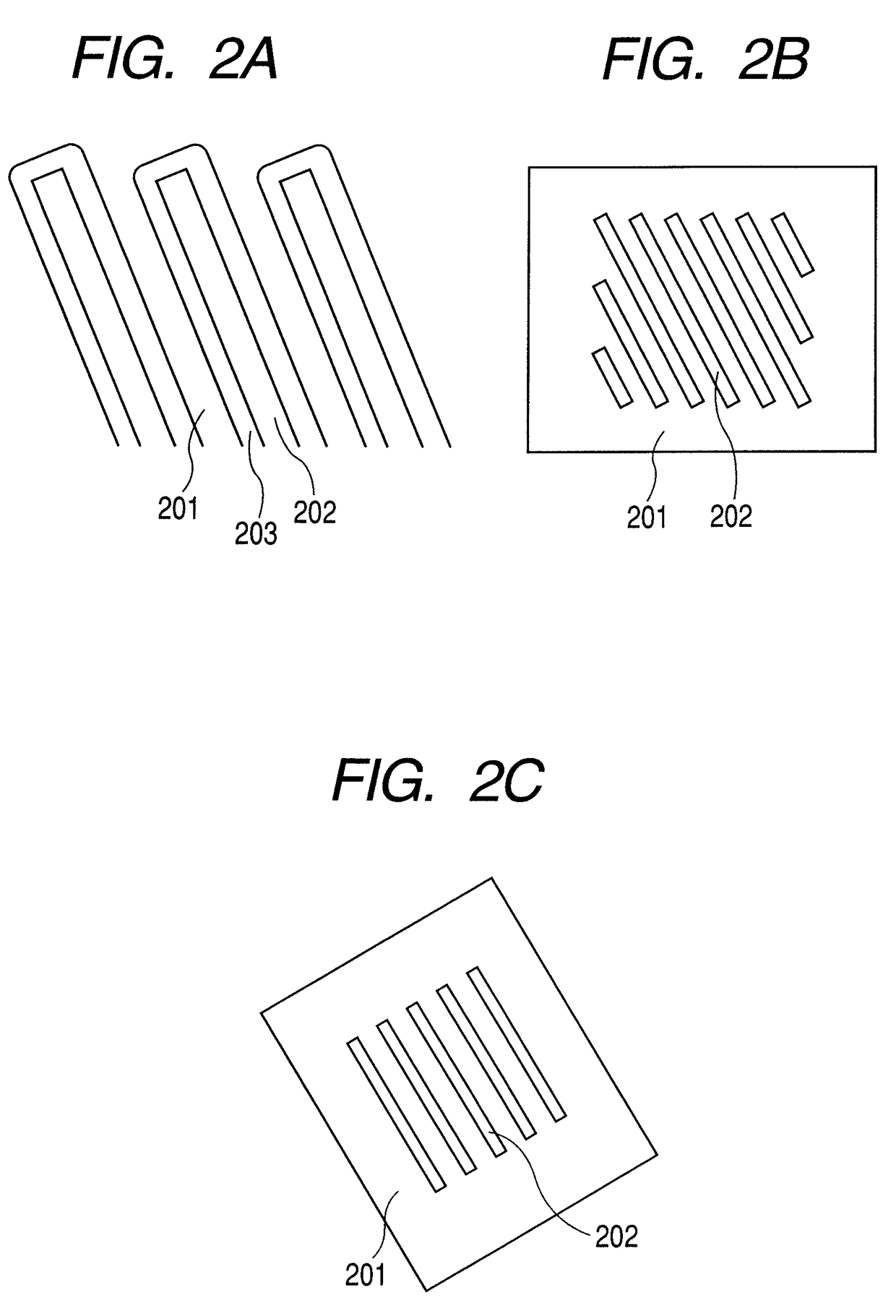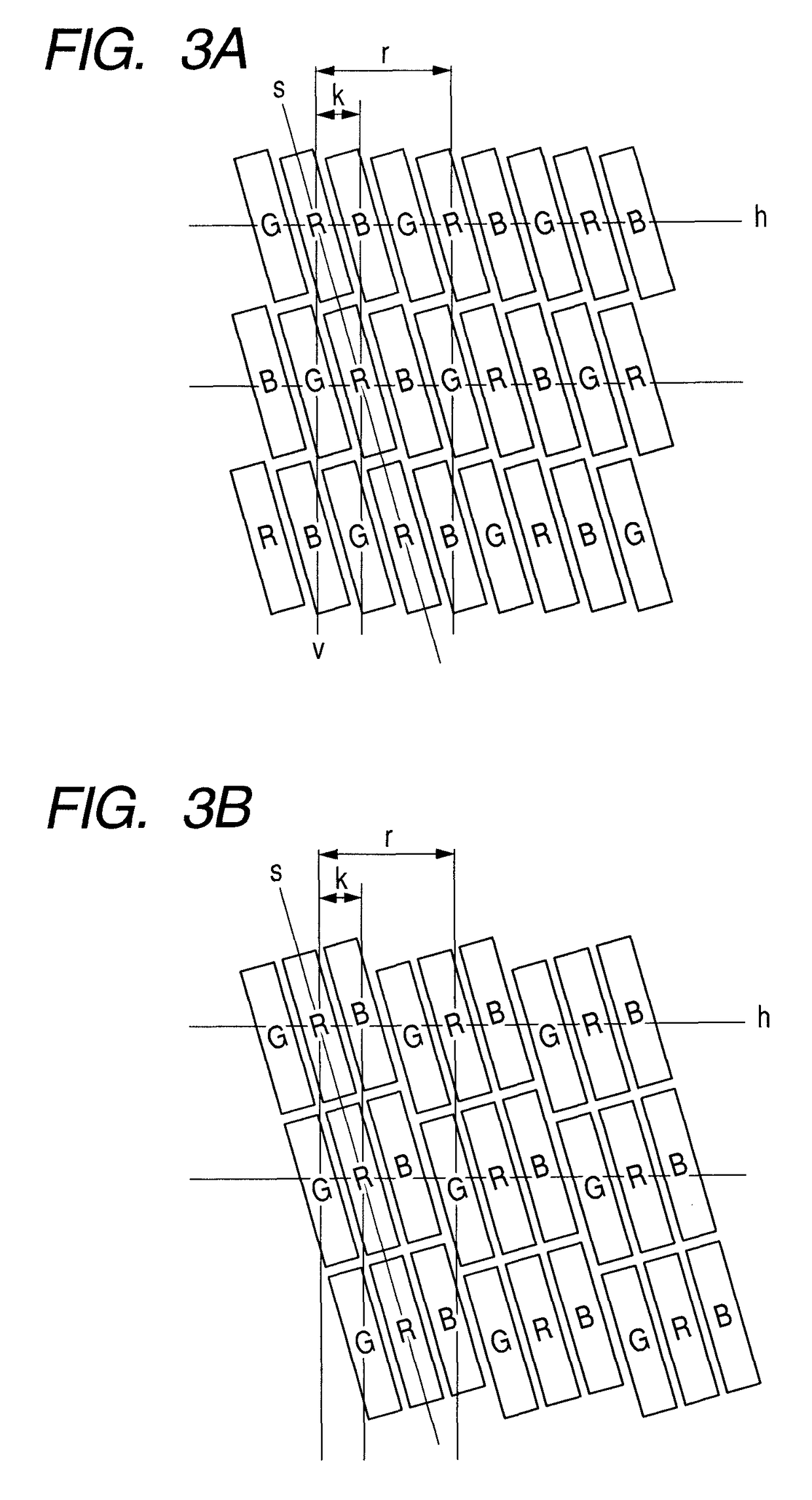Color image display panel and method of producing the same, and color image display apparatus
a color image and display panel technology, applied in the manufacture of electrode systems, electric discharge tubes/lamps, instruments, etc., can solve the problems of reducing the yield affecting the strength of masks, and affecting the production efficiency of high-definition image display panels. , to achieve the effect of shortening the driving lifetime of devices, reducing the brightness of image display panels, and increasing the current density of devices
- Summary
- Abstract
- Description
- Claims
- Application Information
AI Technical Summary
Benefits of technology
Problems solved by technology
Method used
Image
Examples
example 1
[0141]A method of producing the image display panel of the present invention will be specifically described. A silicon TFT active matrix drive circuit corresponding to 100 ppi is formed on a glass substrate. An insulating / planarizing layer made of an acrylic resin is superimposed on the circuit. A chromium reflecting layer having a thickness of 300 nm and an indium tin oxide layer having a thickness of 0.6 μm each connected to the driver transistor through a through-hole opened in the acrylic resin layer are formed. The chromium reflecting layer and the tin oxide layer are each patterned in the planar shape shown in FIG. 1, whereby a first electrode is obtained. The size of the first electrode, which is of a shape of parallelogram, is as follows: the length of a long side of the parallelogram is 237 μm, and the length of a short side of the parallelogram is 75 μm. An interval between the first electrodes adjacent to each other in a vertical direction is 30 μm, and an interval betwee...
example 2
[0149]Another production example of the image display panel of the present invention will be described.
[0150]An image display portion obtained by arraying 960 columns×240 rows of active matrix drive circuits in accordance with FIG. 9 on a glass substrate, and a silicon TFT substrate on which the latch array 406, and the shift registers 405 and 407 shown in FIG. 10 have been formed are produced. Each of the data signal lines 411 connects a blue sub-pixel in an odd row and a red sub-pixel in an even row, a green sub-pixel in an odd row and a blue sub-pixel in an even row, or a red sub-pixel in an odd row and a green sub-pixel in an even row in the vertical direction. An insulating / planarizing layer made of an acrylic resin is superimposed on the surface of the image display portion. An Ag alloy (AgPdCu) layer having a thickness of 100 nm and connected to each of the driver transistors through a through-hole opened in the acrylic resin layer is deposited. Further, an indium zinc oxide ...
example 3
[0157]A production example of the image display apparatus of the present invention will be described. The display control portion 402 shown in FIG. 10 is connected to the image display panel of Example 2. The controller 409 outputs a V start pulse, and then computes the brightness of each sub-pixel in the first row of the display portion 403 with reference to the video signal conversion memory 408.
[0158]Next, the controller 409 outputs a reset signal for the H shift register. After that, the controller 409 sequentially and serially outputs data on the brightness of each sub-pixel determined by the calculation together with an H shift clock. After the completion of output for one row, the controller 409 outputs a V shift clock to carry out the same treatment as that described above for the next row.
[0159]After the completion of a treatment for the final row, the controller 409 waits for a predetermined time period, and repeats again the same operation commencing on the output of a V ...
PUM
 Login to View More
Login to View More Abstract
Description
Claims
Application Information
 Login to View More
Login to View More - R&D
- Intellectual Property
- Life Sciences
- Materials
- Tech Scout
- Unparalleled Data Quality
- Higher Quality Content
- 60% Fewer Hallucinations
Browse by: Latest US Patents, China's latest patents, Technical Efficacy Thesaurus, Application Domain, Technology Topic, Popular Technical Reports.
© 2025 PatSnap. All rights reserved.Legal|Privacy policy|Modern Slavery Act Transparency Statement|Sitemap|About US| Contact US: help@patsnap.com



